Focal Length Q&A
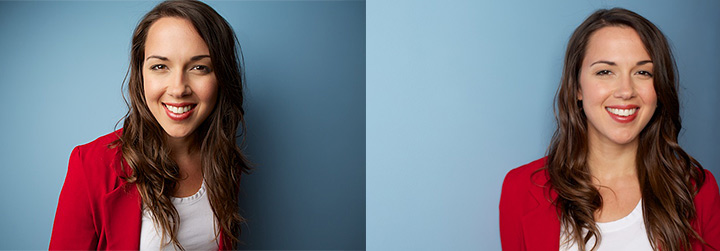
“I had recently taken some headshots for a friend of a friend, and had begun experimenting with focal lengths. Previously, the widest I would go was 50mm, but with the picture below I tried my seldom-used 24mm on for size. Attached to this email is my favourite pic from the shoot at 24, followed by a pic I took immediately afterwards at 50mm, which seems so dull and flat to me by comparison. I don’t know if the 50 is to blame, or I just never would have picked that shot, but the 24mm shot has so much more life and depth to me that I felt I had really hit upon something. Even the lighting has more texture and natural vignetting, which I did not think would be affected. All said, subsequent shoots have not really supported what I thought would be a revolution in my picture-taking. Other photographic subjects don’t seem to have held up as well. Also, I haven’t heard back from my subject as to which images she prefers so I’m worried that in her eyes that my wider pictures have in fact distorted features that she’s sensitive about.”
Right off, your subject has absolutely nothing to be sensative about. That’s a beautiful woman. Nice choice of background color to contrast the red jacket.
Now as for the focal length question, as many of my readers know, I’m a bigger fan of using wider-angle lenses for portraits than conventional wisdom dictates. For me it’s less about getting closer to the subject and more about including more of their environment in the shot, which I think gives context to the portrait and often ‘room to breathe’ visually. That said, a little distortion can also be a good thing. As an example I was looking at this picture of my friend Abby the other day with satisfaction. I think that was taken with a 35mm lens.
I agree that your 24mm image on the left is the better shot of the two by far. However there is a lot more at play than focal length. The light is off to the side giving her features more dimensionality and the fact that her body is turned into the camera helps that as well. It also feels like a more real smile to me, and authenticity is huge. I also agree that the vignetting helps pull your eyes to her face. The shot on the right feels flat in comparison.
So the wide totally works in this instance, but it won’t always. Depends on the subject and the situation. Also 50mm is a classic focal-length but it’s also pretty boring. Don’t get me wrong, I shoot 50 all the time, but it’s basically what you see with your own eyes and without the camera. It’s what people’s minds expect. Many portrait photographers go the other way and shoot 85mm, 135mm, even 200mm, in an attempt to distort in the other direction by flattening features as much as possible. This may sometimes give you more flattering results, but I tend to think they’re also usually boring.
Good on you to try something new. I think it’s successful. OK, part two:
Unfortunately it doesn’t quite work that way. Focal lengths are really only important in that they define your field of view. If you had the same 24mm on a Rebel it would be the equivalent of a 38mm lens (24mmx1.6 crop factor) on a full frame body. Acting closer to 50mm than 24mm. So basically you’d end up with something closer to the shot on the right than the one on the left. Cropped sensors are less expensive and give you an advantage in increased depth-of-field because you’d be further from the subject to take the same shot vs a full frame camera, but they don’t really effect the wide-angle equation in the way you ask. Plus because cropped sensors throw away the edges of the image coming through the lens so you’d also lose all that nice vignetting you’ve fallen in love with.
Thanks to John for the great question and example images.
The Candid Frame – I’m this week’s guest!
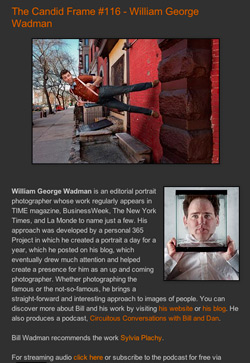 Last week I was lucky enough to be the guest on Ibarionex Perello’s fantastic photo podcast called The Candid Frame.
Last week I was lucky enough to be the guest on Ibarionex Perello’s fantastic photo podcast called The Candid Frame.
We talk about the need for personal projects, the story behind my 365Portraits.com project, as well as how I approach taking portraits and working with the subject to get them to be a partner in the process. It was great fun to record and Ibarionex is a real gentleman. So go listen to my episode and while you’re there, subscribe to the whole series. It’s that good.
Spread the word and enjoy.
Format Comparison Results

Last week my friend Dan came over with a couple of medium format cameras. (As a quick aside, Dan and I do a podcast called Circuitous Conversations with Bill & Dan if anyone is interested in that sort of thing) The idea was to take the same or very similar picture with a number of different cameras and formats in a controlled setting to see how much of a difference there actually is. Now I’m sure a number of other people have done similar comparisons over the years, but often they’re of some building outside or a still-life of random objects on a table. Pixel peeping porn for sure, but not really meaningful to me as a portrait photographer. To that end I asked my other friend Chris Keeting (yes, I only have two) to come and sit very still for a couple hours. Btw, Chris is @analognation on twitter is a painfully witty guy whom you should follow.
In the running were the following:
- a Canon 5D Mark II with a 50mm/1/2L prime at ISO 100
- a 1972 Hasselblad 500CM with 80mm lens loaded with Kodak Portra 160 film
- the same Haselblad 500CM with a Phase One P65 digital back at ISO 100
- a Phase One 645 body with 80mm lens and a different Phase One P65 back
- and for good measure, a Cambo 4×5 with 150mm lens loaded with Fuji 160S
The low-res results can be seen here: http://ontakingpictures.com/2011/02/format-comparison-teaser/
This is a surprisingly hard thing to do for a number of reasons. First is having the subject in the same position, and Chris did a wonderful job in this role. Though even subtle changes in the way the light hits his fact can effect how you perceive the images. Film speed is also very difficult. I wanted to get the light set and shoot them all with the same power of light at the same aperture. However if you look at the list above you’ll see that the film cameras were using ISO 160 film. Now, that’s only about a half a stop, and C41 negative film is fine with a little bit of over-exposure. So I let it slide. Plus, I was going to try to work a little curves action to get them in the same ballpark anyway.
Matching
It was also really hard to get the white balance of the pictures similar. To get the two MF backs to visually match the Canon at 5600K, they were at 5180 and 5860 respectively. I’m not sure if that’s a matter of terrible calibration at the factory or if that’s the way these things always act, but a 600k shift between samples, and neither was correct, is a alot. Somehow I trust my Canon more than the $40,000 backs on this respect. I also had to scan two different formulations of film and try to get them to match. Nulling out the orange cast of the film substrate in the process. Ideally what I should have done was to shoot a frame of a color chart which would give me a reference for everything plus neutral grays. But alas I didn’t think of it and therefore had to do it by eye.
The other big problem is that I was shooting at the same aperture, f/8, on all formats so that I didn’t have to reset the light value with every switch. The problem here is that f/8 gives a very different depth of field depending on the size of the sensor or film. Especially on the 4×5 where f/8 is just one stop away from wide open. In retrospect, I could have used a lightmeter to set the light lever for each camera while trying to compensate by stopping down the bigger cameras, but then you get into questions of diffraction effects of the lenses at that aperture and such. The practical upshot being that these are all different beasts and in some ways it’s like comparing apples and oranges. All those qualifiers out of the way, I do think I did a relatively good job of weighing and mediating all of the factors.
So what did I find out?
In the end, these are the points that I took away from looking at the resulting images.
First off, all of the cameras did a fine job taking the picture. All of them are professional quality. And if you’re only going to be looking at them on the web or your average magazine size print, there is no practical differences in my eyes.
You all know what 20MP full frame files look like, and I’m sure that many of you have shot film, so I don’t need to go into detail on those. The 4×5 looked suitably great. However I’d much rather use slide film or b/w in large format for some reason. In fact when it comes right down to it, I really only enjoyed shooting Polaroid 55 with it. That leaves us with the two MF backs.
 In the ‘pro’ side for the MF backs is the fact that there is a sick amount of information in the files. I’d say they have more in common with a 4×5 frame of film than a 120 frame. This also extrapolates down to smaller digital where I think my 5D2 gives me a file that’s almost as good as my Hasselblad using film. Definitely way more than my Leica can. The question then becomes “Do I need that much information?” and that’s a good question. Like I said, if you’re not printing big, then to my eyes there isn’t the need. Another thing is that because there is no AA filter in front of the sensor, you also get an incredibly sharp image as well. Like poke your eye out sharp and detailed. See below. MF RAW files are also 16bit (most modern SLRs are now 14bit) which means there’s more data in each color channel for you to work with. This results in extreme plasticity in manipulating the RAW data. Over-exposure of 3 full stops can be pulled back; similar results in pulling up the shadows, which are less grainy and quantized as well. You can do with with Canon and Nikon files, but not 3 stops in the highlights. Maybe 1, or 1.5 stops tops. This can be a lifesaver in very specific situations.
In the ‘pro’ side for the MF backs is the fact that there is a sick amount of information in the files. I’d say they have more in common with a 4×5 frame of film than a 120 frame. This also extrapolates down to smaller digital where I think my 5D2 gives me a file that’s almost as good as my Hasselblad using film. Definitely way more than my Leica can. The question then becomes “Do I need that much information?” and that’s a good question. Like I said, if you’re not printing big, then to my eyes there isn’t the need. Another thing is that because there is no AA filter in front of the sensor, you also get an incredibly sharp image as well. Like poke your eye out sharp and detailed. See below. MF RAW files are also 16bit (most modern SLRs are now 14bit) which means there’s more data in each color channel for you to work with. This results in extreme plasticity in manipulating the RAW data. Over-exposure of 3 full stops can be pulled back; similar results in pulling up the shadows, which are less grainy and quantized as well. You can do with with Canon and Nikon files, but not 3 stops in the highlights. Maybe 1, or 1.5 stops tops. This can be a lifesaver in very specific situations.
The ‘con’ side to all the above ‘pro’s is that your technique must be flawless. They are precision instruments and EVERYTHING you do is magnified. You get 3 times the data of my 5d, but camera shake and focus errors are magnified along with it. I found it very hard to focus accurately enough on both the Hasselblad (manual) and the Phase (auto/manual). The viewfinders, while huge compared to 35mm, are still no large or fine grained enough to match the sensor that’s ultimately catching the photons.

Speed is also a concern as these backs max out at about a frame a second. So if you’re used to snap snap snapping away at a clip, you’re in for a awakening. The autofocus is also slow and hard to control. Really there’s only the center point, which is fine for me since that’s all I usually use anyway, but if you’re trying to focus on the eyeball you may get the eyebrow instead half the time. I guess the answer here is to stop down the lens so that more stuff is in focus, but deep focus portraits are often not what I’m looking to take. Honestly, minus the backs, medium format cameras feel like 15 year old consumer film slr bodies. They’re also big and heavy. Not the kind of thing you’re going to want to be holding for hours.
Oh and I should mention computers for a second. Remember that these files are 3 times the size of the Canon’s. Which means they’re 3 times bigger when you open them up in Photoshop, which means you need at least 3 times the RAM to manipulate them at the same clip. I’ve got 12GB of RAM in my desktop and these images are HUGE. The picture of Chris that I posted the other day, with fairly light retouching and editing for me, came in at around 1.6GB as a PSD. If I were using one of these cameras everyday, I’d upgrade my RAM to 24GB or more without flinching. There were times when my desktop felt like a laptop while working on them, and I’ve got a very fast computer.
Finally there’s the question of cost. The Phase One setup was about ten times the cost of the Canon setup. Like in all things it’s certainly not a linear progression. The Phase is not 10 times better than the Canon. Maybe twice as good or three times as good in image quality, but only if you assume that everything else is perfect. The light, focus, tripod, etc. On top of the initial cost of the camera is the cost of the lenses which are often thousands of dollars each. More than the price of the Canon setup. Look, I’ve got a $8000 stereo, so I know the law of diminishing returns, but even I’ve got my limits.
Would I want one? Sure. Do I need one? No. And that’s actually a surprising result for me. I thought the results would make me speechless with awe, but in the end I was just really impressed. My next big gig where I’ve got a budget, I’ll certainly be renting one. A rig like that would have been great for some of my personal projects, but I can’t really complain as I’ve still got a setup that most people would kill for.
If you’ve got any questions, feel free to ask in the comments and I’ll try to answer as best I can.
New Background Progress
I’m being taught some new background painting techniques by my lovely friend Hannah. She, unlike me, knows what she’s doing with paint. She’s a real professional, and was the subject of my ‘Inspired Artist’ Panel.
Yesterday was multiple passes of two color washes. Hopefully later today we’re going to regroup and get more daring. Whitewashing is in the air! In the meantime, here’s our progress and a shot of Hannah herself.
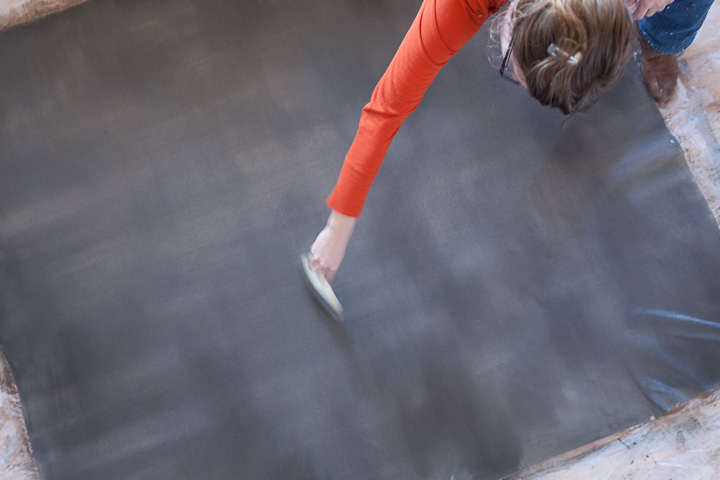

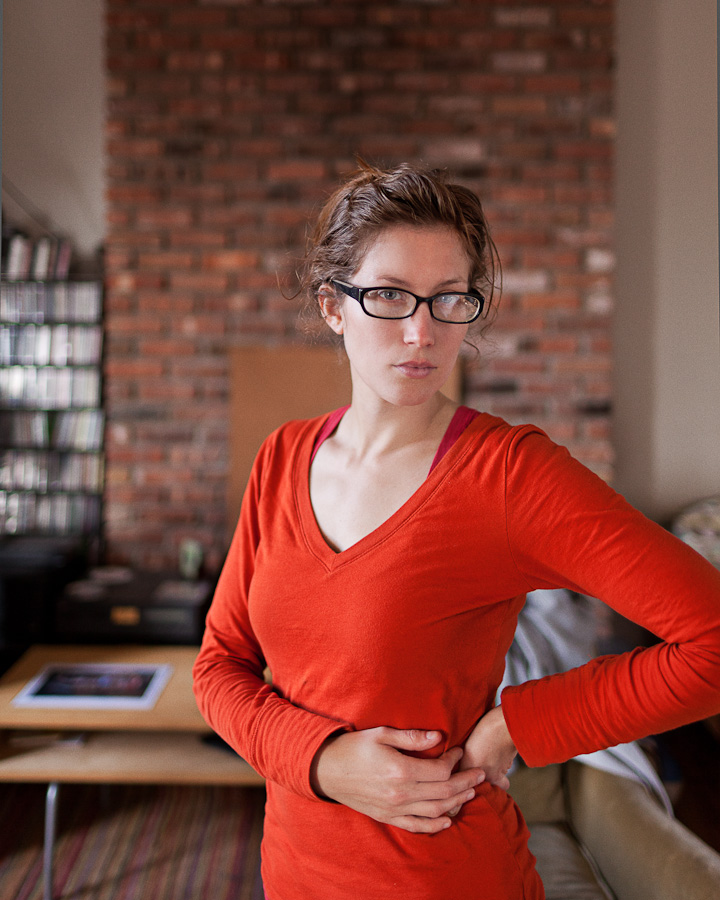
Format Comparison Teaser
Two of these images were shot on P65 medium format backs. One on a Canon 5d2. Another on a Hasselblad 500 with Kodak Portra 160 film and the last a frame of Fuji 160 pro in a large format 4×5.
I did a bit of minor color work to get them all in the same ballpark, and though the focal lengths and angles are not exact, AND the images I’m showing you are small, I still think it’s an interesting discussion. More detailed post or posts coming soon, but I thought I’d put this up as a teaser. Let’s see if you can guess which are which in the comments.
UPDATE: I’ve written more about this format comparison over here.
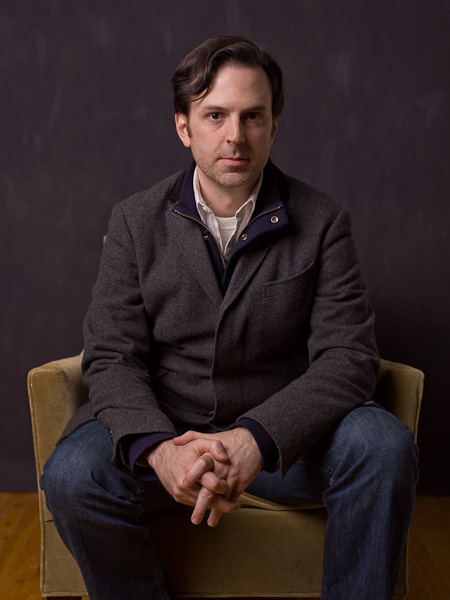
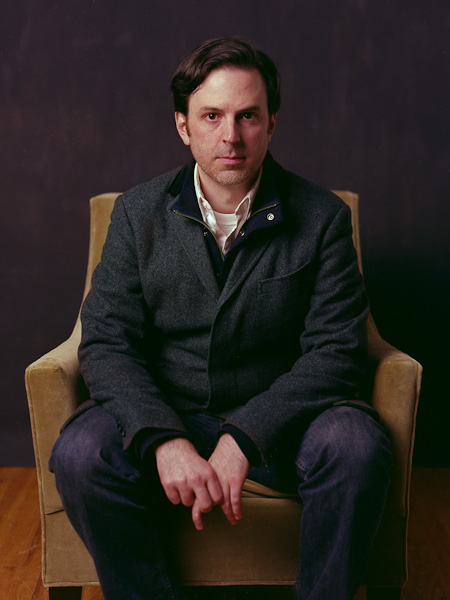
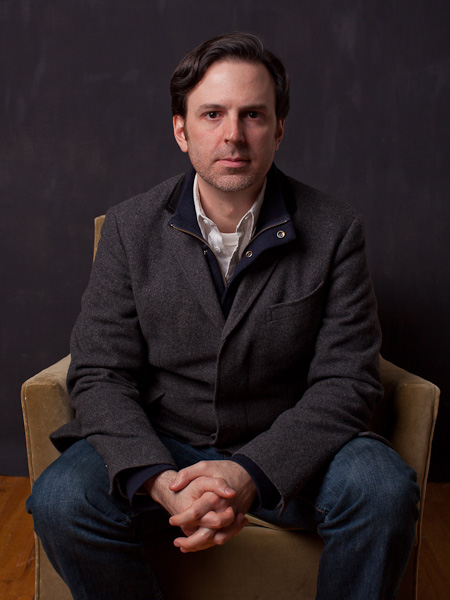
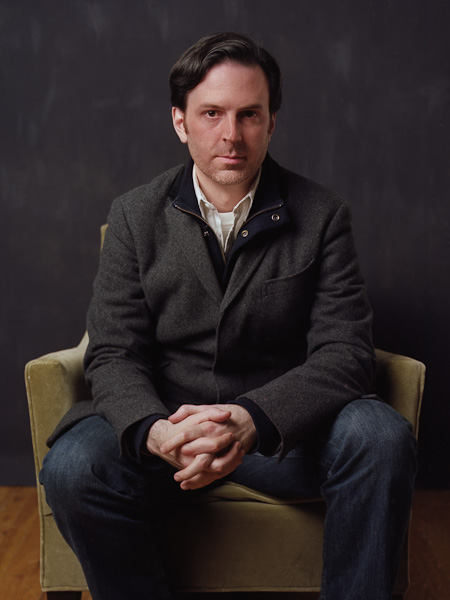
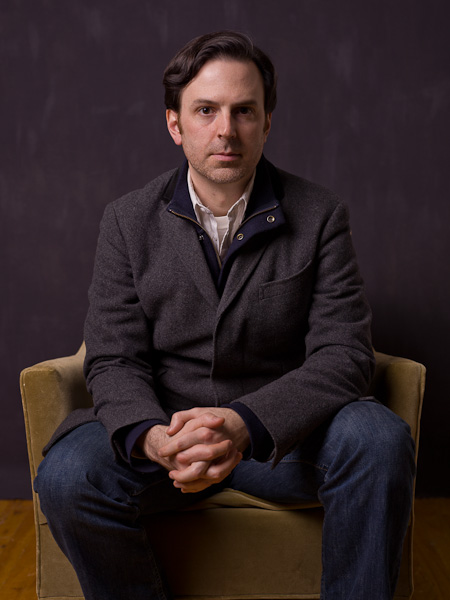
Megapixels, Who Needs Them?
 Well, me for one, though in my opinion most people don’t.
Well, me for one, though in my opinion most people don’t.
The first consumer digital SLRs were 6 Megapixel cameras. I remember, I had a original Digital Rebel back in 2004 when they came out and I thought 6MP was a world of data. Granted my previous digital camera was a little 2MP digital Elph so it real was a world of data. Then I went to a 20D at 8MP and a 5D at 12MP and finally to a 5D2 at 21MP. Now the average pocketable compact camera is 12 to 14 megapixels, which I think is just crazy.
DigiCams
First off, most of the people using these cameras are coming home from a vacation and dumping their 140 pictures of them and their family at the beach onto their computer. Probably into iPhoto or similar and then onto Flickr or Facebook. Both of which will involve throwing out 90% of the picture’s information to get it down to the 1000px that’ll fit on your average screen. Very few people print anymore. In fact, I don’t think I know anyone other than pro or serious amateur photographers who does. I’m sure there out there, but I don’t know any, and I think the days of having shoe boxes full of 4×6″ prints has certainly come to an end.
It’s not to say that I don’t think people should print. I certainly think they should. Most of the online places will do 4×6″ prints for 20 cents or less. I think people should come back from their vacation, cull the 140 pictures down to 30 good ones and have them printed and put in a box or an album. No one needs to see 7 shots of that same sunset. Pick the best one or two and move on. In fact I think that’s a problem for photographers in general in the digital age. Digital lets you take a lot of pictures, but that doesn’t mean you should and it doesn’t mean you have to keep them all. It’s all about editing.
And even if people are actually printing; How big are they printing at? I printed a couple shots from my 6MP Rebel at 20×30″ and they’re passable from a foot or two away. But how many people print posters? I’d say that 99% of pictures are printed 8×10″ or smaller, and a 12MP compact is overkill for that size print.
(more…)
What’s in a Bag?
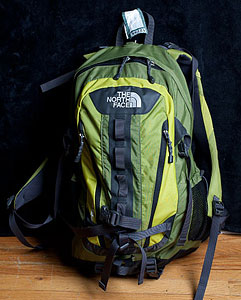 Here to the left is the green “North Face” backpack I bought for my trip to Japan a couple years ago. It’s perfect for a week long trip the way I travel, which is very lightly. My sister recently gave me crap about it saying, “Sure you only carry one little bag, but you’re wearing the same thing in every picture”. Perhaps, true enough. I’m all about comfort and layers, so be it. At least I can carry my luggage around with me which gives me a certain sense of freedom when I’m abroad. If you’re the kind of person that has 2 big suitcases with them when they travel, you should try my way next time. I’ve found it pretty great.
Here to the left is the green “North Face” backpack I bought for my trip to Japan a couple years ago. It’s perfect for a week long trip the way I travel, which is very lightly. My sister recently gave me crap about it saying, “Sure you only carry one little bag, but you’re wearing the same thing in every picture”. Perhaps, true enough. I’m all about comfort and layers, so be it. At least I can carry my luggage around with me which gives me a certain sense of freedom when I’m abroad. If you’re the kind of person that has 2 big suitcases with them when they travel, you should try my way next time. I’ve found it pretty great.
Well this little green bag has proved to be a pretty great photo bag as well. I’ve got a couple expensive Crumpler bags (I really like my Crumpler bags, they’re not cheap but they hold up and look cool) which I use much of the time (one backpack like this one and a shoulder type like this one), but sometimes I need to carry a bit more than just my camera and a lenses or two with me. The setup that can fit in this bag is what I used for most of the Drabbles shoots, which gives you some idea of it’s versatility.
(more…)
The Tale of Three 50s. Good, Better, & Best
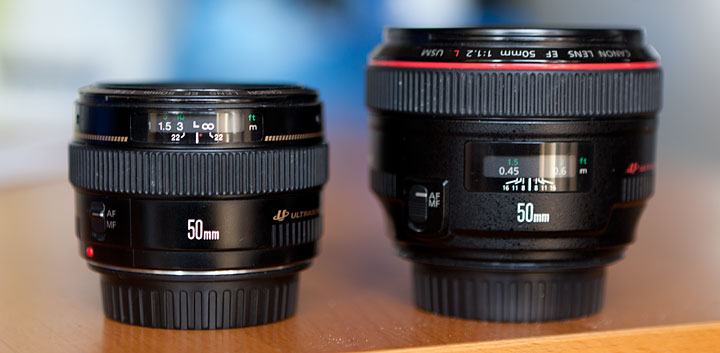
Many of the camera makers will make similar lenses at different price points. People ask me if it’s worth it to get the next one up. That is a very difficult question to answer, but I’m going to try.
Let’s start off by offering the fact that almost all modern lenses are really good compared to the past. Sure there are those people who swear by their dad’s ‘72 Nikor whathaveyou and 1950s Leica and the T* Zeiss stuff for Hasselblad glass is gorgeous, but for the most part, older 35mm lenses in particular, are not as sharp as modern lenses. They’re soft at the corners, have serious vignetting, and often much less effective lens coatings to control lens flare and such. Of course some people like these distortions and think they give their pictures a certain look, to which I say good for them. For me, I’d rather stick with modern glass when I work. So even a crappy zoom lens they throw in when you buy a cheap body is pretty good optically as long as you stop down the lens a bit. Lenses tend to get sharper as you stop them down (to a point, most hit their peak at f/8 or f/11). That said, a nice lens with a fixed focal length, or ‘prime’ lens as they’re called, can really up the image quality ante. Being a bit of a 100% pixel peeper myself, image quality is next to godliness.
Ok, now back to the issue at hand. There are a million examples of what I’m talking about, but I’m going to choose one easy one. 50mm Canon primes. Canon makes a 50mm prime lens with apertures of 1.8, 1.4, and 1.2. The last one being one of their L line of high-end glass. I happen to own all three of these, so I’m in a good position to talk about them.
Low Light Considerations
A reader wrote me an email a couple days ago asking me to write about low-light photography, so here it goes.
I shoot in low light almost all of the time. In fact, it came as a revelation a couple years ago when I realized how much freaking light you need to take good pictures most of the time. Figure you’ve got 400 speed film and want to stop down to f/5.6 or so to get some depth of field, and then you’re hand holding the camera and shooting people, so your shutter speed needs to be 1/60th or a second or better. That’s of course, in the old days when super grainy fast film was your only other option. Now on digital, many of the new cameras do really well at 3200 or 6400 iso or even higher. An order of magnitude better than just a few generations ago. This opens up lots of opportunities where in the past you would have just put your camera away.
Ok, enough nostalgia. First off, a few facts. All things being equal, the bigger the sensor, the better, because if you’ve got a cropped sensor and a full frame one which are both 12MP, each pixel on the full frame sensor will be bigger and thus capture more light with less need to amplify the signal and all the noise that comes with that process (man, long run on sentence). This really only applies to 35mm cameras right now. Medium format backs use larger sensors, but as of now, they’re using CCD sensors which are terrible in low light. This is the same technology that Nikon used up until the D3 and why their cameras sucked at high-iso before.
Fact number two, depth of field is related to the size of the sensor or film. So a lens at f/2.8 on a cropped sensor is going to have more stuff in focus than the same aperture on a bigger sensor. This is why the depth of field on large format cameras is so crazy narrow even at f/5.6 or f/8 and why they needed to stop them down to f/64. Talk about needing a lot of light!
So, now how to use this information? Say you’re at a bar with your camera for a karaoke birthday party and for the sake of the story you’ve got a fast prime lens on your camera. Well you’ve got 3 things that will effect your exposure. Aperture (how big the hole is), shutter speed (how long the hole is open), and iso (how sensitive the sensor is). Since we’re in really low light, there’s no chance you’ll be shooting at 1/1000th of a second. So let’s figure you lock down your shutter speed to 1/50th of a second. So that leaves aperture and iso, and these are two somewhat conflicting controls. Sure you can keep the noise down by keeping iso at 1600 by opening up your lens to f/1.8 for example. But if you’re trying to get a bunch of faces in focus, you’re going to be in trouble. So you stop down to f/2.8 or so (still not great for depth, but what are you gonna do) and up your camera to 3200 or 6400 and deal with more noise.
Unfortunately the effect of aperture on depth-of-field and shutter speed on blurred images are part of the physics of the universe, so there’s not much you can do about them. So camera makers coming out with better and better sensors and noise reduction is the only way to improve the situation. There’s a brick wall there too though, since a pixel needs a certain amount of light to work and light is in packets called photons, there is a point at which a pixel needs at least 1 photon to register anything at all, but I don’t think we’re near that yet.
Another annoying thing is that while a cropped camera’s smaller sensor gives you more depth of field, allowing you to use larger apertures, it’s also inherently more noisy due to the smaller pixel pitch. No free lunch. Or use a flash, though flashes kinda suck in situations like that. I know a wedding photographer who swears by one of those little Sony camcorder lights. He sometimes uses it mounted on the hot shoe, but also uses it to backlight or hairlight a subject in a pinch.
Personally, I vote for a full-frame dSLR and some fast primes which would give you the most options in such a situation. I hope I answered the question.
Marketing Q&A
More questions from Dwayne, along with my answers, of course…
Question #1 – Do you have a rep? If so why did you feel you needed one and if not why don’t you feel you need one?
I don’t currently have a rep, but I do have some pots on the fire. In my opinion a rep is a double-edged sword. They find you work, but they take a cut. Then again, you probably would not have had the work if they hadn’t gotten if for you. I also worry a bit about losing control over the direction of my career and the jobs I do, but I think that’s just spliting the hairs of my deep nerosyis. I’m doing ok with the editorial work, but I would like to do more ad work and that’s where a rep would help.
Question #2 – How do you estimate pricing for jobs, corporate and portrait work?
Oh, that’s very very tough and I’m terrible at it. Some people like to use that software, quotepro or something like that. Living in NYC, the numbers are not always right from my limited exposure with it. For editorial work, most publications have standard rates that you’ve got to work within, and personal portraiture is a gray area between how much you want the shoot and how much your time is worth. Personally, I’d rather shoot people I want to shoot and charge them a little to use the photos rather than have them pay me for real and then I’m tied to making them happy.
Question #3 – What type of marketing do you do?
Not nearly enough. My friend Meg printed and sent out hand numbered postcards a couple weeks ago. I need to be much more like her. I do however hear mixed messages on whether mailers work. Some people get so many they just throw them out and say they prefer to be able to just click on a link to a website. Others want something they can pin up on their wall if they like it. Art buyers offices are like mini-museums in this respect. On top of all this, I’ve found that people in this industry move around so much that address lists are out of date and 20% of your stuff bounces back.
I guess you could say that my 365 Portraits thing was marketing, though I didn’t mean it as such. You could consider this blog marketing, though most of the people who read it are photographers themselves, so I guess that’s a moot point. Marketing is expensive and I’m a procrastinator, and that’s probably a bad combination. I’ve also got a weird opinion of my own work. At my worst, I’m almost embarrased to send it out for people to look at. I don’t want to waste their time. That is a really bad situation. I need to buck up and be prepared to look like an ass for my art. I’m working on it.
—————————————————————
By the way, I like this question/answer stuff. If anyone has any particular questions, feel free to email me at bill at billwadman.com
